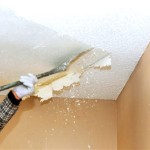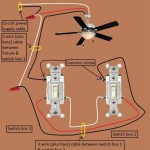How To Clean Water Stains On Car Ceiling
Water stains on a car's ceiling are a common problem that many vehicle owners face. These stains, often unsightly and potentially indicative of underlying issues, can detract from the overall appearance and value of the car. Addressing these stains promptly and effectively is crucial for maintaining the vehicle's integrity and preventing further damage. Understanding the causes of water stains, the appropriate cleaning techniques, and the necessary precautions will enable vehicle owners to restore their car's ceiling to its original condition.
The formation of water stains on a car's ceiling typically stems from leaks within the vehicle. These leaks can originate from various sources, including a faulty sunroof seal, damaged weather stripping around windows or doors, or even a compromised antenna base. When water infiltrates the car's interior, it often seeps into the fabric or material covering the ceiling. As the water evaporates, it leaves behind mineral deposits and other residues, resulting in the visible stain. Ignoring these stains can lead to more significant problems such as mold growth, weakening of the ceiling material, and further damage to the vehicle's interior.
Before commencing the cleaning process, it is essential to identify the source of the leak responsible for the water stains. Repairing the leak prior to cleaning will prevent the recurrence of stains and further damage. Failure to address the underlying leak will render the cleaning efforts temporary and ultimately ineffective. Inspect the sunroof, weather stripping, and other potential entry points for cracks, gaps, or damage. Consult a professional for leak diagnosis and repair if the source is not readily apparent or if the repair requires specialized tools or expertise.
The selection of appropriate cleaning materials and tools is essential for effectively removing water stains from a car's ceiling without causing damage. Harsh chemicals or abrasive materials can discolor or degrade the ceiling fabric, exacerbating the problem. Instead, opt for gentle cleaning solutions specifically designed for automotive interiors, such as upholstery cleaners, fabric stain removers, or a mild solution of soap and water. The tools used should also be non-abrasive and suitable for delicate surfaces, such as microfiber cloths, soft-bristled brushes, or a handheld vacuum cleaner with a brush attachment.
Key Point 1: Preparing for the Cleaning Process
Prior to commencing the cleaning process, proper preparation is crucial to protect the vehicle's interior and ensure effective stain removal. The first step involves protecting the surrounding areas from potential drips or overspray. Cover the seats, dashboard, and other exposed surfaces with plastic sheeting or drop cloths to prevent accidental staining or damage. This protective measure will minimize the risk of further cleaning requirements and maintain the integrity of the vehicle's interior.
Ventilation is another important consideration during the cleaning process. Open the car doors and windows to allow for adequate airflow, particularly when using cleaning solutions that may emit fumes. Proper ventilation will help to dissipate any odors and prevent the buildup of potentially harmful vapors. If weather conditions permit, consider performing the cleaning process outdoors or in a well-ventilated garage.
Before applying any cleaning solution to the entire stained area, it is advisable to perform a spot test on an inconspicuous area of the car's ceiling. This test will help to determine the compatibility of the cleaning solution with the ceiling fabric and identify any potential discoloration or adverse reactions. Choose a small, hidden area, such as the corner of the ceiling or an area behind a sun visor, and apply a small amount of the cleaning solution. Allow the solution to dwell for a few minutes, then blot it with a clean microfiber cloth. Observe the area for any signs of discoloration, damage, or adverse reactions. If no adverse effects are observed, proceed with cleaning the entire stained area.
Key Point 2: Cleaning Techniques for Water Stains
Effective cleaning techniques are essential for removing water stains from a car's ceiling without causing further damage. The specific technique employed will depend on the severity of the stain and the type of fabric or material covering the ceiling. For light water stains, a gentle cleaning solution and a microfiber cloth may suffice. For more stubborn stains, a combination of cleaning solutions, gentle scrubbing, and blotting may be necessary.
Begin by applying a small amount of the chosen cleaning solution to a clean microfiber cloth. Avoid applying the cleaning solution directly to the car's ceiling, as this can saturate the fabric and potentially damage the underlying adhesive. Instead, dampen the microfiber cloth with the cleaning solution and gently blot the stained area. Avoid rubbing or scrubbing the fabric aggressively, as this can spread the stain and damage the fibers. Work in small, overlapping sections, blotting the stain from the outside inward to prevent it from spreading.
For more stubborn water stains, a soft-bristled brush can be used to gently agitate the stain and loosen the mineral deposits. Lightly spray the stained area with the cleaning solution, then use the soft-bristled brush to gently scrub the fabric in a circular motion. Avoid applying excessive pressure, as this can damage the ceiling material. After scrubbing, blot the area with a clean microfiber cloth to remove the loosened stain and excess cleaning solution. Repeat this process as necessary until the stain is removed or significantly diminished.
After cleaning the stained area, it is essential to thoroughly dry the car's ceiling to prevent the formation of new water stains or the growth of mold and mildew. Use a clean, dry microfiber cloth to blot the cleaned area and remove any remaining moisture. Allow the car's ceiling to air dry completely by leaving the doors and windows open. If weather conditions permit, park the car in a sunny location to expedite the drying process. A fan can also be used to circulate air and promote faster drying. Ensure that the ceiling is completely dry before closing the car doors and windows.
Key Point 3: Preventive Measures and Maintenance
Preventing the recurrence of water stains on a car's ceiling requires proactive maintenance and regular inspection. Regularly inspect the sunroof, weather stripping, and other potential entry points for leaks or damage. Address any issues promptly to prevent water from infiltrating the car's interior. Applying a sealant to the sunroof and weather stripping can help to create a waterproof barrier and prevent leaks.
Maintaining a clean and dry car interior is also crucial for preventing water stains. Regularly vacuum the car's ceiling and upholstery to remove dust, dirt, and other debris that can attract moisture. Avoid spilling liquids inside the car, and promptly clean up any spills that do occur. Use absorbent materials, such as towels or paper towels, to blot up the spill and prevent it from soaking into the fabric.
Consider using a car cover when parking the vehicle outdoors, particularly during periods of rain or snow. A car cover will protect the car's exterior from the elements and prevent water from seeping into the interior. Choose a car cover that is waterproof and breathable to allow for adequate ventilation and prevent the buildup of moisture. Regularly inspect the car cover for damage and replace it as needed.
For vehicles prone to leaks or water damage, consider using a dehumidifier inside the car to absorb excess moisture and prevent the formation of water stains. Place the dehumidifier in a secure location inside the car and empty it regularly. Ensure that the dehumidifier is properly maintained and that the air filter is cleaned or replaced as needed. Regularly monitoring the humidity levels inside the car can help to identify and address potential moisture problems before they lead to water stains.
By implementing these preventive measures and maintaining a regular cleaning schedule, vehicle owners can minimize the risk of water stains on their car's ceiling and maintain a clean and attractive vehicle interior.

Diy Car Headliner Water Stain Removal Guaranteed

How To Remove Nasty Water Stains From Car Headliner Using Meguiars In Depth Step By

Headliner Deep Clean Stain Removal
How Clean Water Stains Off Of Your Vehicles Headliner

3 Ways To Clean A Car Ceiling Wikihow
Cleaning Water Stains In Headliner Sunroof Leak
Cleaning Water Stains In Headliner Sunroof Leak

How To Remove Nasty Water Stains From Car Headliner Using Meguiars In Depth Step By

3 Ways To Clean A Car Ceiling Wikihow

3 Ways To Clean A Car Ceiling Wikihow
Related Posts








